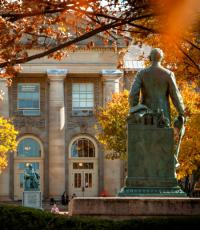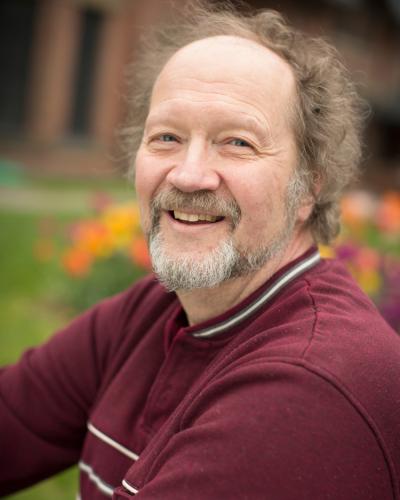Paul Sawyer’s calling began when he tried his hand at preaching a story in church alongside his father, a clergyman. As a child he was an avid reader and writer. His family recognized him as a bookworm and a “walking encyclopedia.” When asked about a future career, Mr. Sawyer would say “novelist” as he delved into his fantasy world, scrawling his stories on “shelf paper.”
As an undergraduate at the University of Michigan in the 1960s, Sawyer was immersed in political activity. “I began to see history already without even realizing it.”
“The past was not always the past but a reflection of the present.”
He went on to pursue a PhD in Victorian literature at Columbia. When asked about his time in New York City, he vividly recalls an anti-war demonstration that broke out in Midtown Manhattan. Surrounded by protestors he stumbled over a club and broke his shin. Sawyer says that moment “defined my life in some ways,” exposing a “world of political urgency.”
Professor Sawyer starting his career at Cornell in 1975, where he was a beloved teacher for 34 years.
He admits that taking up a position at an Ivy League department was difficult, at first, as he was trying to face the world’s expectations and discover himself. But he threw himself into activism again, helping the student-led anti-Apartheid movement in the 1980s, which urged the university to divest from companies that supported the South African government.
Sawyer also started to weave teaching and activism together, developing a popular interdisciplinary course on the culture and politics of the 1960s. This “was not only educational for me,” he says, “but also a hope for my students. I had the sense that what was exciting about the 1960s — and of course risky as well — was not apparent to the people growing up under a president like Reagan, and I wanted to bring that back to the students. I wanted to engage deeply with figures like Martin Luther King, Jr. and Malcolm X.” Sawyer remains fascinated by a decade rich with opposition centered around youth, including struggles for civil rights, anti-war, women’s rights, and gay rights.
He wanted students to see that “The past was not always the past but a reflection of the present.”
Joining the students protesting against Cornell’s decision to replace its Redbud Woods with a parking lot, Sawyer was arrested by a Cornell security officer, who “had actually been a student in my class in the 1960s.” Sawyer says: “So I was happy to be arrested by him.”
Along with Kenneth McClane, Sawyer was one of the founding members of the Cornell Prison Education Program, an initiative that helps incarcerated men receive degrees in the arts. He still teaches for the program and says that the most rewarding part of his work is when he can visibly see gratitude in the prisoners’ eyes as they are treated with human dignity and respect.
From 2006 to 2016, Sawyer directed the John S. Knight Institute for Writing in the Disciplines.
Professor Sawyer was recognized with a Stephen H. Weiss Presidential Award for excellence in teaching in 2011. When asked about the most memorable aspects of his career, he recalls how much he has always loved open class discussion and the rich diversity of student viewpoints.






